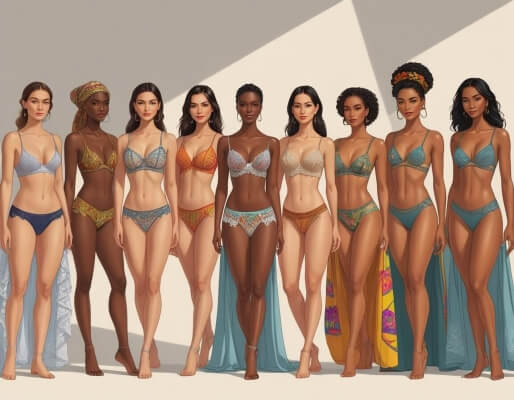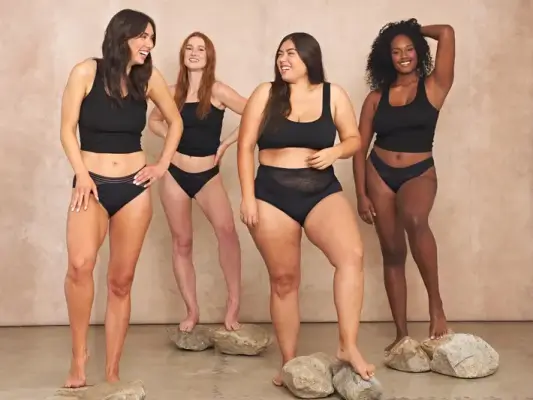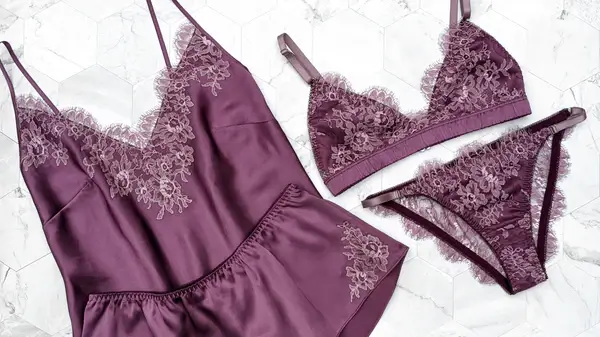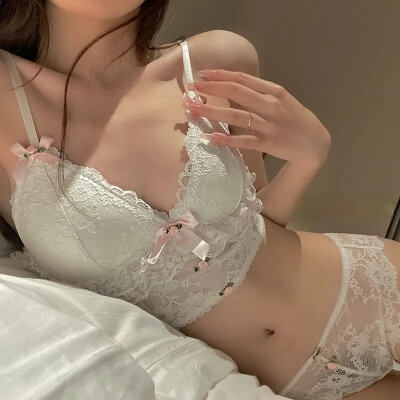What Lingerie Actually Sells in the US, Middle East & SEA? A Manufacturer's Guide to Winning Styles
You have a best-selling lingerie collection in your home market, and now you're ready to go global. But you're launching blindly, unsure if a style that's a hit in New York will be a complete flop in Dubai or Kuala Lumpur.
To succeed globally, brands must understand that lingerie is deeply cultural. What sells is not universal. While the US/EU market prioritizes everyday comfort and inclusivity, the Middle East favors visible luxury and occasionwear, and Southeast Asia seeks sweet aesthetics and breathable, high-value fabrics. A one-size-fits-all approach is doomed to fail.

"Think global, act local" isn't just a marketing buzzword; in the lingerie industry, it's the golden rule for survival. As a manufacturer for brands all over the world, I see the stark differences in the tech packs and purchase orders that come across my desk. A US brand might order thousands of seamless microfiber bralettes in neutral tones, while an order for a client in the Gulf will be filled with ornate, jewel-toned lace sets. At HAVING (China) Ltd., our versatility is our strength. We've built our production lines to cater to these diverse global tastes. This guide is an insider's look at what's really selling in these three key regions, so you can stop guessing and start strategizing.
The US & EU Market: Is Comfort the New Confidence?
For decades, the Western market was dominated by a singular vision of sexy, often at the expense of comfort. But a profound cultural shift has taken place, completely reshaping what women are looking for in their lingerie drawers.
Yes. In the US and EU, the ultimate aspiration is now effortless, confident comfort. The best-selling styles are those that work with the body, not against it. This means a huge demand for wire-free bralettes, seamless construction, inclusive sizing, and products with a strong sustainability story.

This shift is undeniable. The rise of the body positivity movement and a focus on wellness has changed everything. Our "body-before-fabric" philosophy aligns perfectly with this trend. We see massive orders for T-shirt bras made from ultra-soft microfiber and seamless panties that are invisible under clothes. The modern Western woman is busy; she needs lingerie that can keep up with her lifestyle, from the office to the gym to lounging at home. Brands that win here are the ones that celebrate real bodies and provide functional, beautiful solutions for everyday life. This is why our expertise in creating high-quality, comfortable bras and panties is so valued by our North American and European partners.
What's in the Western Consumer's Shopping Cart
- Wire-Free Bralettes & Soft Bras: The demand for comfort has made underwires optional for many. Designs in soft modal, lace, and microfiber are perennial best-sellers.
- Seamless & No-Show: The "second skin" feeling is paramount. Seamless and bonded underwear that eliminates panty lines is a wardrobe staple.
- Inclusive & Plus-Size: Brands that offer a wide range of sizes, from petite to plus-size, and cater to a variety of skin tones are winning the market. This isn't a niche; it's the new standard.
- Sustainable Materials: GRS-certified recycled fabrics and organic cotton are no longer just a bonus. A growing segment of consumers makes purchasing decisions based on a brand's environmental credentials.
The Middle East Market: Is Visible Luxury the Ultimate Goal?
When approaching the Middle East, many brands make the mistake of thinking it's a conservative, muted market. In reality, the lingerie market, particularly in the GCC countries, is a vibrant celebration of luxury, color, and intricate detail.
Absolutely. For the Middle Eastern consumer, lingerie is a form of personal luxury and a key part of her extensive occasion-based wardrobe. The best-selling products are ornate, high-quality lace sets, luxurious loungewear for home entertaining, and spectacular bridal collections. Modesty in public is often contrasted with opulent glamour in private.

This is a market driven by a love for fine craftsmanship. I've worked with buyers from Dubai and Riyadh who will scrutinize the quality of a piece of French Leavers lace or the density of an embroidered pattern in a way that is truly remarkable. Price is often secondary to the perceived quality and uniqueness of the design. The social calendar, filled with events like weddings and Ramadan gatherings, also heavily influences purchasing. A significant portion of a woman's lingerie budget is dedicated to her trousseau or special occasion pieces. Furthermore, loungewear, such as elegant robes and pajama sets, is not just for sleeping; it's for entertaining female friends and family at home, making it a highly visible and important category. Our ability to handle delicate, high-end materials and complex embellishments is essential for our clients in this region.
Keys to Winning the Middle Eastern Market
- Ornate & Embellished Styles: Intricate lace, detailed embroidery, and embellishments like crystals and pearls are highly desirable.
- Rich Color Palette: While black and red are popular, there is a strong demand for rich jewel tones like emerald green, sapphire blue, and deep amethyst.
- Matching Sets & Collections: Consumers here love to buy complete, coordinated sets—a bra, panty, suspender belt, and matching robe.
- Luxurious Loungewear: High-quality, beautifully designed pajama sets, chemises, and long robes in materials like silk, satin, and high-grade modal are a huge market.
The Southeast Asia Market: Is It All About Sweetness and Staying Cool?
The diverse and youthful market of Southeast Asia (SEA), including countries like Indonesia, Malaysia, Thailand, and Vietnam, presents a unique blend of preferences shaped by climate, culture, and economic factors.
Yes, to a large extent. The hot, humid climate makes breathable, "cooling" fabrics non-negotiable. Culturally, there's a strong preference for sweet, cute, and often Korean or Japanese-inspired aesthetics. Finally, as a value-conscious market, high-quality products at an accessible price point are key to winning over the consumer.

This market is all about the feel of the fabric. Materials that are marketed as "ice silk" (a type of silky, cool-touch microfiber) or super-soft modal are incredibly popular. Anything heavy, thick, or non-breathable is a non-starter. Aesthetically, the influence of K-pop and J-fashion is immense. This translates to a demand for softer colors, delicate prints, and cute details like small bows or subtle lace trims. It’s less about overt seduction and more about a youthful, feminine charm. As a manufacturer, this means our ability to source these specific lightweight, high-performance fabrics is crucial for our SEA clients. Offering a high-quality finish and durable construction at a competitive price point, as we do through our efficient OEM/ODM services, is the formula for success here.
Unlocking the Southeast Asian Market
- Cooling & Breathable Fabrics: Lightweight microfiber, modal, and high-quality cotton blends are essential.
- Sweet & Youthful Aesthetics: Pastel colors, small floral prints, and delicate, non-ostentatious lace details are very popular.
- Comfortable, Padded Styles: There is a strong preference for padded and push-up styles that offer a smooth, rounded shape under clothing.
- Value for Money: Consumers are savvy and expect a good balance of quality, comfort, and price. Durability and easy-care properties are important selling points.
Your Global Product Strategy: A Cheat Sheet
Here's a simplified breakdown to guide your product development and assortment planning for each region.
| Attribute | US / EU Market | Middle East Market | Southeast Asia Market |
|---|---|---|---|
| **Core Driver** | Comfort & Inclusivity | Luxury & Occasion | Breathability & Value |
| **Best-Selling Styles** | Bralettes, T-shirt bras, Seamless Panties | Ornate Balconettes, Matching Sets, Robes | Padded Bras, Cute Bralettes, Full Briefs |
| **Color Palette** | Neutrals, Earth Tones, Black | Jewel Tones, Black, Red, Gold | Pastels, Light Colors, White |
| **Fabric Preference** | Microfiber, Modal, Recycled Fabrics | Lace, Embroidery, Silk, Satin | "Ice Silk" Microfiber, Modal, Cotton |
| **Key Feature** | Wire-free, Sustainable, Size-inclusive | Embellishment, High-quality Lace | Cooling feel, Padded cups, Cute details |
Conclusion
Success in the global lingerie market isn't about having one perfect product; it's about having the right product for the right market. This requires a deep understanding of local tastes and a manufacturing partner who is versatile enough to bring these diverse visions to life.
Frequently Asked Questions (FAQ)
1. Is red lingerie popular everywhere?
Not necessarily. While red is a classic color for lingerie and is very popular in the Middle East and for specific Western holidays like Valentine's Day, it's generally less popular for everyday wear in the US/EU compared to neutrals. In many Southeast Asian cultures, pastel colors are far more common for daily wear.
2. How important is a "Made in [Country]" label in these markets?
In the US/EU, there is a growing interest in supply chain transparency, and some customers value products made in Europe or the US. However, "Made in China" is widely accepted, especially when the brand can demonstrate high quality and ethical production standards (like BSCI audits). In the Middle East and SEA, the focus is much more on the product's design, quality, and brand prestige than on the country of origin.
3. Do sizing standards differ between these regions?
Yes, significantly. A size "Medium" in the US is typically larger than a size "Medium" in Asia. It is absolutely critical for brands to develop a region-specific size chart and not use a single global standard. You must clearly communicate to your manufacturer which country's sizing standard you are following.
4. What are the key cultural taboos to be aware of?
In the Middle East, marketing must be handled with sensitivity. While the products themselves can be opulent, public-facing advertising should be modest and avoid overly explicit imagery. In some parts of Southeast Asia, overly "sexy" or provocative marketing may not resonate with the mainstream consumer, who prefers a sweeter, more feminine aesthetic.
